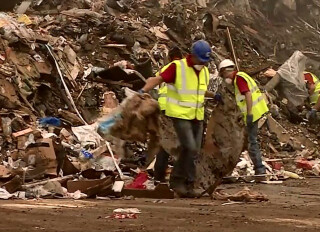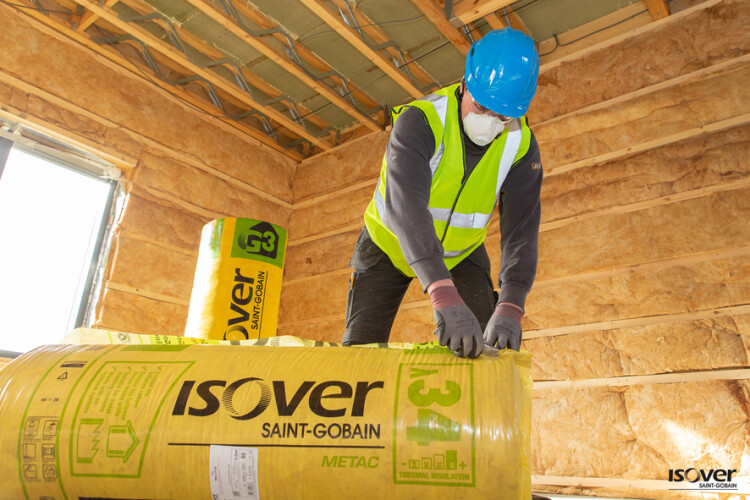Who hasn’t seen the pictures of turtles choking to death on discarded polythene bags, seabirds strangled with plastic rings and dolphins drowned in a tangle of discarded netting?
Such is the level of concern over the damage being done by discarded single-use plastics that even McDonald’s, whose abandoned packaging is a familiar sight in every high street, has foresworn plastic drinking straws in favour of paper ones.
Public opinion is now firmly in favour of reducing our consumption of single-use plastics. But these products are now so ubiquitous that it will take more than public opinion to bring about a significant reduction in their use.
In the UK, we have had legislation to promote the recycling of post-consumer and post-industrial plastics for more than 20 years. The single biggest contributor to plastic waste is packaging, a problem addressed by the Producer Responsibility Obligations (Packaging Waste) Regulations 2007 – or PRO for short.
These regulations impose a responsibility on the producers and users of packaging to contribute towards the cost of recovering and recycling their packaging materials.
This article was first published in the June 2020 issue of The Construction Index Magazine. Sign up online.
The PRO regulations require producers and users to prove they have paid for the collection and recycling of a stipulated tonnage of packaging waste annually, which they do by submitting Packaging Recovery Notes (PRNs) issued by the recycling sector.
These PRNs can be traded, rather like Renewables Obligation Certificates (ROCs) in the energy sector, so that a company that is unable to physically recycle the quantity of packaging required of it by the PRO regulations can buy additional PRNs to top up its requirement.
Construction is a significant contributor to the amount of plastic packaging waste generated in the UK. In particular, palleted products such as bricks and blocks, and many light-side materials like bathroom fittings, are delivered to site shrink-wrapped in polyethylene, bound with plastic straps or swaddled inside protective polystyrene foam – all of which is discarded as soon as the delivery is unpacked.

Contractors, being consumers rather than producers or users of packaging, are not covered by the PRO regulations. But they will ultimately pay the price as soaring costs force materials producers, distributors and builders’ merchants to raise their prices.
The cost of collecting and recycling all this material is already rising rapidly but it is going to increase exponentially over the next couple of years, warns Dom de Ville, senior consultant with sustainability consultancy Sancroft.
“On its own, the per-tonne increase of plastic compliance – from an average of £50 in 2017 to over £400 in 2019 – is eye-catching enough,” says de Ville. “However, when these costs are modelled for large and mid-sized businesses, we calculate that for every £1,000 a company was spending on plastic compliance in 2017, they are now spending over £8,000.”

The cost of these PRNs has effectively risen from a level many businesses might have considered a manageable marginal cost of doing business, to a major cost centre. Meeting recycling targets is also becoming much tougher, partly because countries like China and Indonesia are increasingly reluctant to accept waste from the UK and dispose of it (often by simply dumping it) for us.
“Under the current system, if you put the waste on a ship and send it to China, that counts as recycling,” says de Ville.
The cost of PRNs is likely to increase every year until 2023, when an even more onerous system is introduced. Before that, in April 2022, a new Plastic Packaging Tax will come into force: producers and importers of plastic packaging containing less than 30% recycled plastic will be taxed at the rate of £200 per tonne of packaging.
The money raised through PRNs currently contributes around 10% of the cost of collecting and recycling waste packaging. The other 90% of the cost comes from the Council Tax; waste recycling is devolved to local authorities. But according to de Ville, the government wants industry to start paying the full cost of recycling – including the associated cost of collection, administration, communication and even litter-picking.

Industry will really start to feel the impact in April 2023 with the introduction of Extended Producer Responsibility (EPR) rules designed to force producers and users of packaging to pay the full net cost of collecting, reprocessing and recycling packaging to local authorities.
“By the government’s own calculations, EPR is set to increase the cost of packaging compliance fees by an estimated 21 times what businesses were paying in 2017 – and we think it’ll be even more than that,” says de Ville.
“Suppose a leading builders’ merchant chain currently spends £50,000 a year to recycle its plastic packaging,” he continues. “From 2023 they’ll be paying 21 times that – over a million pounds – and they’re going to want to pass that on to their customers.”
Faced with the prospect of such steep cost increases, the supply chain is now beginning to talk about doing something to reduce their exposure – and not before time, says de Ville: “Six months ago, nobody was doing anything; companies are only now beginning to wake up to this,” he says.
“Most manufacturers and distributors don’t actually know how much plastic they use in their packaging. They’ve never had to think about it before, but now they need a strategy,” continues de Ville.
That strategy will involve finding ways to reduce the need for plastic packaging, a process that will require detailed consultation with the entire supply chain. In the construction industry, merchants will play a key role in rethinking the way products and materials are packaged and delivered.
“The onus is on the merchants and distributors, because the contractors will be driven by price,” says de Ville. “If merchant A is diligent and merchant B is not, then merchant A will be able to sell cheaper and will have the commercial advantage.”

De Ville compares the new EPR rules with the Landfill Tax – potentially very expensive, but essentially a good way of tackling an urgent environmental problem. “There are details still to be ironed out, and there are potential problems – for example, for expanded polystyrene manufacturers, as their product isn’t commonly recycled,” he says.
At the other end of the supply chain, there will have to be changes to the way plastic packaging is collected and recycled. “The government wants to standardise the way in which local authorities recycle stuff. At the moment, kerbside collection is different in every authority. So although local authorities don’t like being told what to do by central government, they’re going to have to come into line,” says de Ville.
For some local authorities, this could prove almost impossibly challenging. A large proportion of general waste is mixed up with, and indeed contained within, plastic packaging such as the ubiquitous black bin bag. A lot of this currently goes to landfill, but an increasing quantity of general waste is now destined for incineration in energy-from-waste plants built especially for the purpose.

“Local authorities often have long-term contracts with waste firms and are locked in – often for 10 or 15 years,” says de Ville. “What happens if a waste firm builds a multi-million-pound energy-from-waste incinerator for a local authority which then turns round and says ‘we’re not using it’?” De Ville thinks the government might yet have to consider changing the law so that local authorities can escape their contractual obligations.
There’s not much the average construction business can do to influence things at this level, but in an industry that works on tight margins and uses a large amount of plastic packaging, contractors need to engage with their suppliers – the merchants and distributors – and help them work on solutions to reduce their financial exposure to PRN increases, EPR and plastics tax.
If they do not take action, costs are likely to be passed on by suppliers, eating into already very tight margins.
This article was first published in the June 2020 issue of The Construction Index Magazine
UK readers can have their own copy of the magazine, in real paper, posted through their letterbox each month by taking out an annual subscription. Click for details.
Got a story? Email news@theconstructionindex.co.uk



